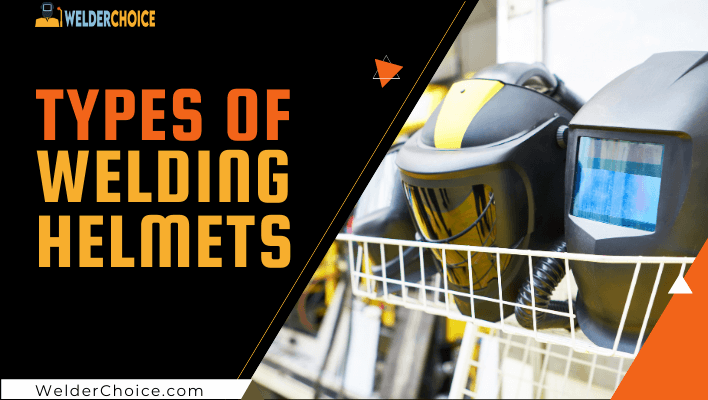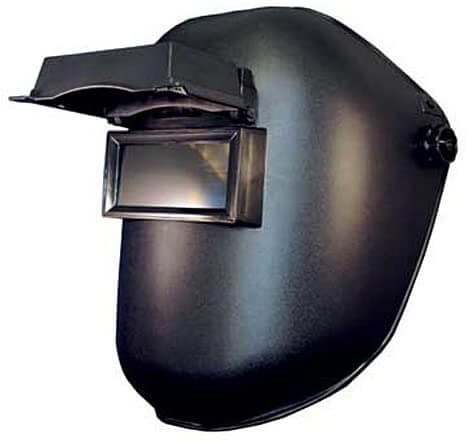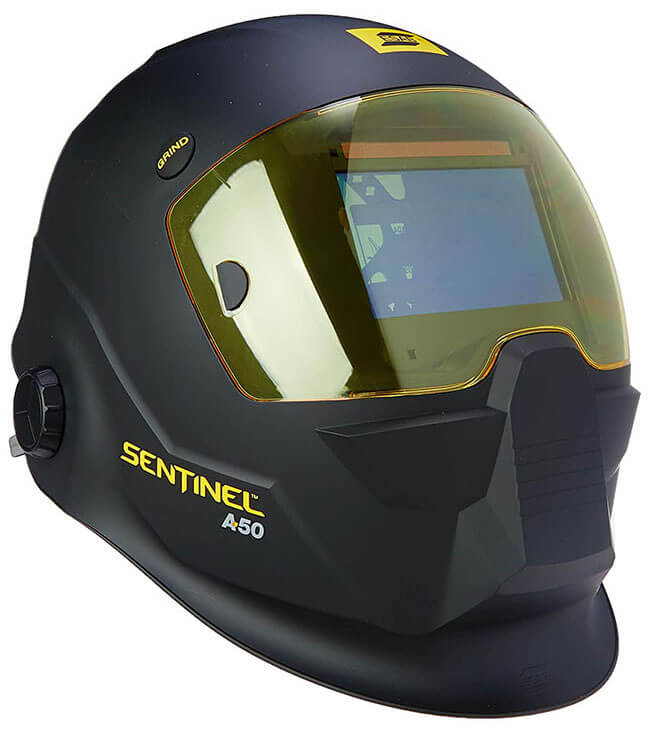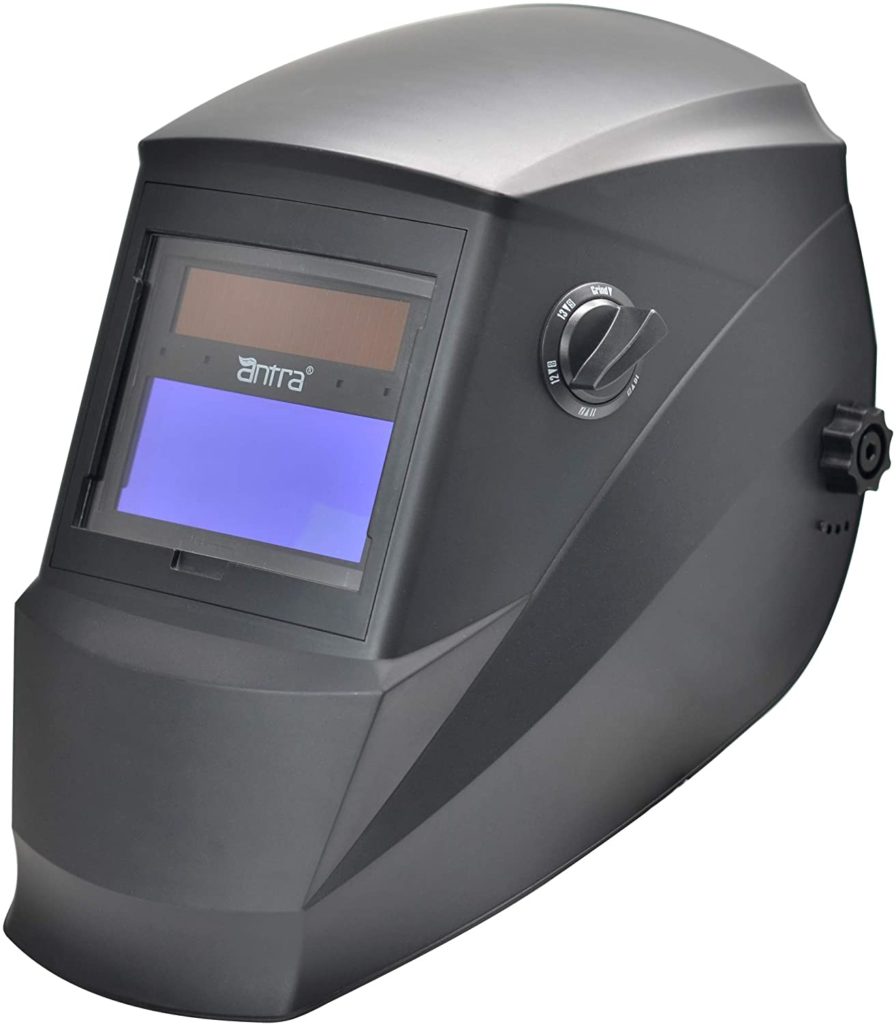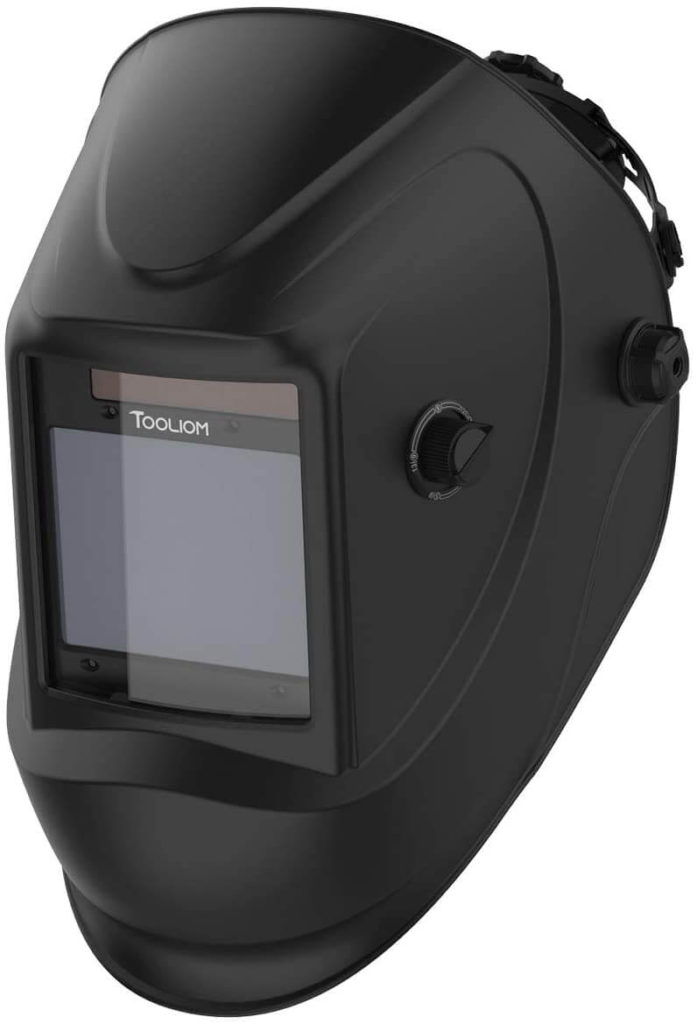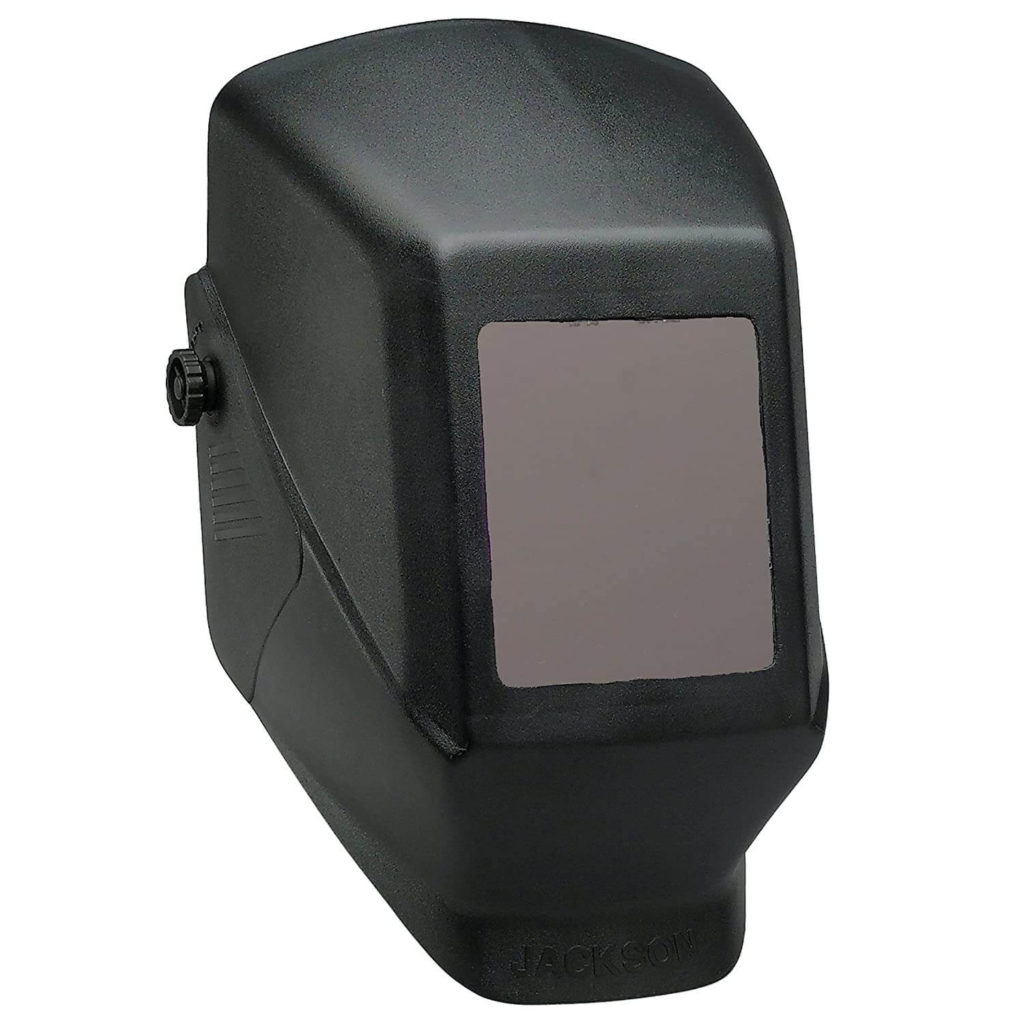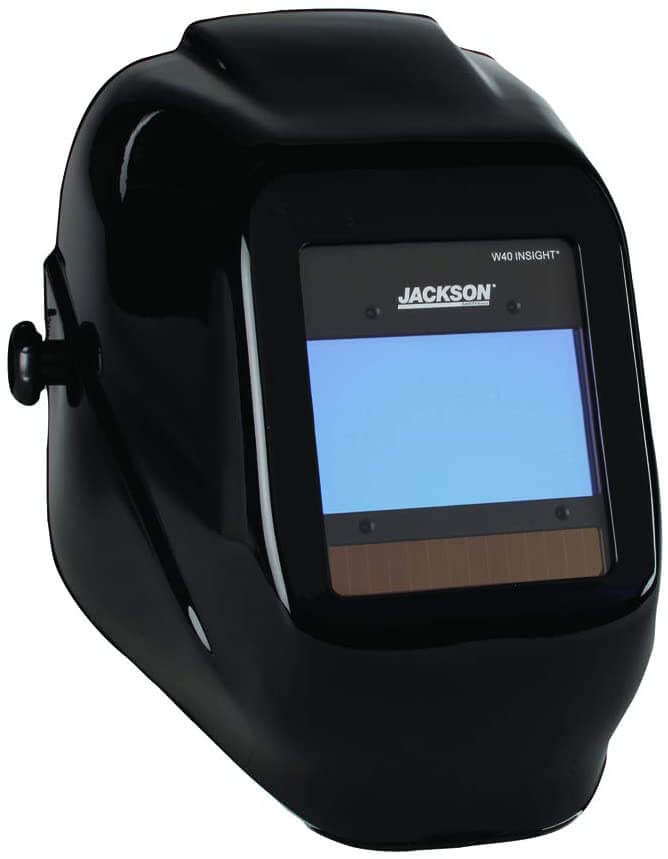We all know that in welding, most of the accidents happen due to the sparks arising from the material. And if the particles land onto the eyes, you can imagine the worst!
For this reason, all the welders should wear a welding helmet. Now if you enter into the market you will come across several different types of welding helmets, choosing one can be challenging. But don’t worry, we are here with a simple solution!
The sole purpose of a welding helmet is to protect you from welding arcs and flying particles. You must be thinking, it looks pretty easy as all you have to do is, find the helmet and get to work, right? NO!
There is a whole science in finding the right helmet and not ‘just a helmet’. And to invest in the right product, you have to have a fine knowledge about it.
But worry no more! This article will clear all your queries regarding the different types of welding helmets and their usage. So let’s begin!
Types Of Welding Helmets
The easy way to figure out which welding helmet is best for you is to consider two things when buying a welding helmet. They are;
- Comfort
- Productivity
Both the factors are interdependent. If you aren’t comfortable in the helmet your work output will decline.
Similarly, if the helmet snug fits on your head and properly covers your head, neck, and eyes you won’t have to readjust it from time to time. And ultimately, it will result in increased productivity with satisfactory results. And that is how it should be! There are around six different types of welding helmets depending on the types of the welding process. Let’s highlight them one by one. Choosing the ideal one is in your hands!
Passive Welding Helmets
This is the oldest facemask for arc welding but hasn’t lost its charm even today. A passive welding helmet protects from hot slag, intense radiations, and flying particles. It is affordable and most professionals still use it.
These helmets produce effective results because of permanent shade, commonly 10 or 12 lenses, independent of arc activation.
Then why is that people are moving on to the modern types of welding helmets leaving this behind?
Well, it’s because, with these helmets, there is a constant requirement of pulling-up the shell during the inspection. This is because the lens isn’t developed enough to help you see clearly through it so you have to pull it up when inspecting and slide it down when welding.
Plus, the passive welding helmets are quite heavy due to the tough material used in construction. However, these welding helmets are safe to use and have passed all standard safety tests. They are indeed Old but Gold!
Moreover, these helmets are one of the best welding helmets for beginners, only if you are quick to learn as it’s quite hard to handle them during arc welding.
Besides, many models do not offer full coverage of the head and neck, so that might cause injuries to exposed body parts. This is why most people are now inclining towards auto-darkening types of welding helmets.
Auto-darkening Welding Helmets
The most highlighted feature of auto-darkening welding helmets is the self-adjusting lens.
What does that mean?
In simple words, it means that the lens reduces the brightness by detecting the light from welding. And how does that happen? Simply via the sensors integrated into the helmet.
Thanks to technology. No more manually adjusting the lens as in passive helmets!
Furthermore, there is no need of taking it off and then putting back on before beginning with the welding. These types of welding helmets have a state switching function, in which, the Lens shade 3 to 4, allows you to see clearly through the lens during inspections.
And during welding, it protects eyes from excessive lights by switching to shade 8 to 13.
All of this comes from the Auto-darkening Filter (ADF) that proves the superiority of this product. It is because of this Filter that the welder’s eyes are protected from severe UV or IR rays.
Moreover, the best part is, this helmet protects the eyes even during the non-welding period, which is when the arc is not active.
This feature enables you to inspect easily without removing the helmet. Plus, it saves your time meanwhile, giving the best and precise results
Well, it doesn’t just end here; the Adjustable Knobs or digital panel in some models give you control over adjusting the delay settings, sensitivity, and dullness according to your need.
But all the top-notch features would come with a price, Right? Therefore, the Auto-darkening welding helmets are pretty expensive.
The Solar Helmets
As the name suggests, the solar types of welding helmets are powered by solar energy. Isn’t that cool?
Manufacturing these types of helmets is a revolutionary idea in today’s world. And their ability to charge without electricity under solar power is fascinating. And that is what makes these helmets economical as well.
Plus, solar-powered helmets have amazing durability. You need to invest in them once, and they last for a very long period. It’s a great investment that goes a long way!
Furthermore, unlike the battery-powered welding helmets (explained below), you don’t have to constantly worry about replacing the batteries. Hence, these solar helmets require little maintenance, which again speaks for their economical nature.
The solar welding helmets are the best option for those who work in the daytime and open air. This is because, at this hour, the helmet will function even without the solar battery, thus there is no need to recharge it during working hours.
Note: On the other hand, for the jobs that require the night shift, don’t forget to leave the helmet in the sun before starting the project. Or keep an extra helmet close at hand.
Well, coming on to the best part, these helmets automatically shut off when not in use to save the battery from draining.
Hence, you can easily take breaks in between without worrying about the battery. In short, their solar battery is what makes these helmets stand out from the rest!
Battery-powered Helmets
Among the different types of welding helmets, battery-powered helmets are available in ready-to-use conditions.
And that is the superior advantage of these helmets over solar helmets. Meaning, you can use the helmet once it is completely charged without having to place it in the sun for a whole day, like in solar helmets.
These helmets give you an option to choose from two different models.
- One with a rechargeable lithium battery
- Or the other with a fixed battery
Your investment depends on your preference!
Talk about the batteries, both of them work fine and are perfect for long hours working, especially when there is no electric supply. However, with lithium batteries, you have the option to recharge the helmet, whereas, in the other type, you have no such option.
Note: It is always wise to keep a spare battery to avoid wasting your time when the whole battery is drained.
Fixed-shade Lens Welding Helmets
As in the name, these types of welding helmets have a fixed shade. Mostly, the shades that are usually available in the market are of level 9 or 10.
Even though the fixed-shade helmets can not upgrade or detect the changes in the brightness level of the arc, they protect the eyes equally well.
Their inability to detect the change in arc brightness is because of a lack of the Auto-darkening Filter. Hence, they are the ideal choice for the jobs that require you to work on only a particular type of material.
These welding helmets do not work well on complicated materials and are certainly not the best choice for projects with variable welding processes.
Furthermore, these helmets are perfect for DIY people who prefer fixing things at home on their own. And it is budget helmet as well, This is why fixed-shade welding helmets are famous as daddy helmets.
Variable-shade Lens Welding Helmets
No need to replace the lens as this helmet has one fixed lens designed for all sorts of welds!
The variable-shade lens helmets are opposite to the fixed-lens welding helmets. These helmets have auto-darkening phenomena like the Auto-darkening welding helmets.
This feature, as we have already explained, enables the helmet to adapt to varying degrees of brightness. It does this by detecting the sparks and brightness from the arc and darkening the lens.
Plus, the lens is also designed to enhance the visibility through it during the inspection.
These types of welding helmets also have an interference prevention mechanism that adds to the visibility through the lens. This feature reduces the intensity of light from the surroundings and helps you focus better on work.
So this is why the variable-shade helmets are the choice of experts on projects that requires welding of variable materials.
FAQs
Conclusion
Once you know what type of material you need to weld and in what type of environment you will work, choosing the right helmet would become a lot easier.
Moreover, along with the welding helmets, don’t forget to buy the other welding essentials, for example, gloves, boots, and safety glasses.
So these were the different types of welding helmets with variable features. Hopefully, there isn’t any confusion left and you are ready to invest in the right product!
